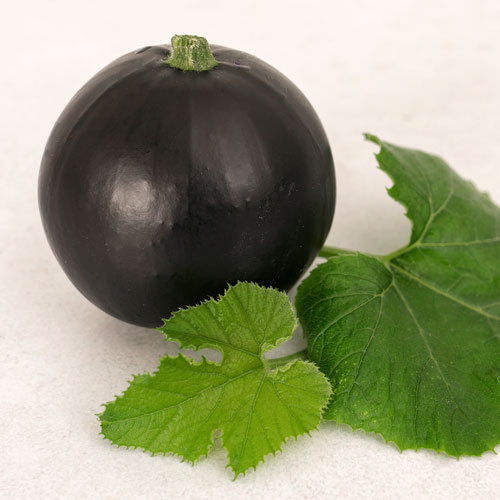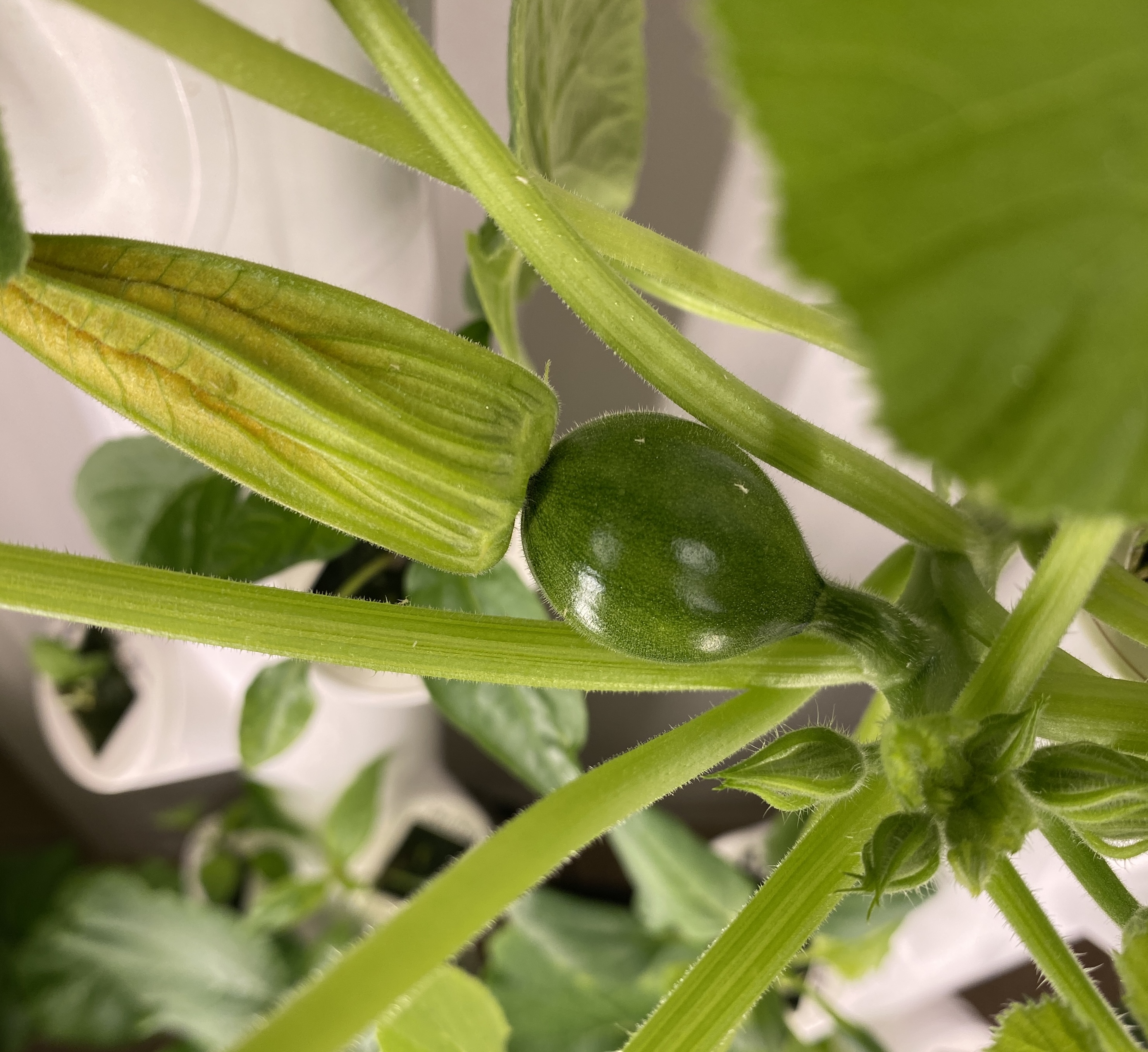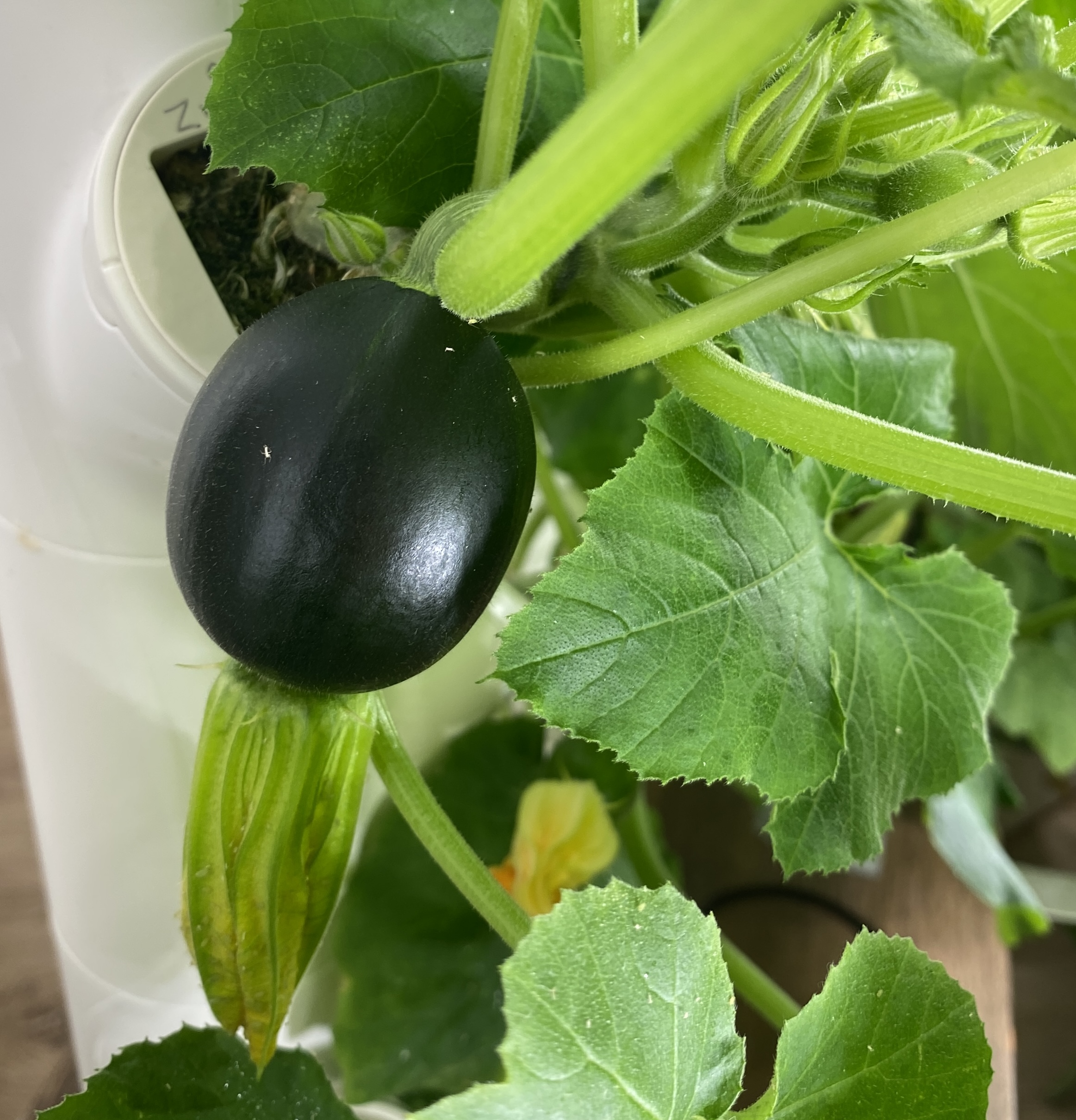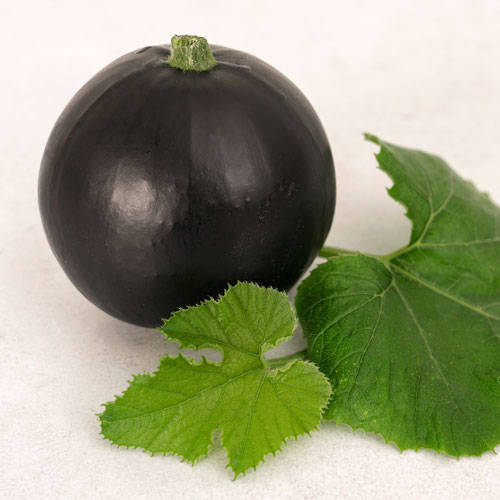Mini Squash
Latin name: Cucurbita pepo
Days to Sprout: 7-14
😋 Ready for Full Dose of plant food with true leaves or roots .5-inch long
Thin to: 1 plant per yCube
Days to Maturity: 50-75 days
💡 Light Zone: High
Plant Size: <2 ft
Care Level: Advanced
Origin
Mini Squash belongs to the summer squash and pumpkin family, which were first grown in Mesoamerica more than 10,000 years ago. Today, these squashes can be found in many colors of the rainbow and a wide variety of sizes, ranging from handheld miniatures like this one to 1-ton giants.
Qualities
Mini Squash is a vining plant with nearly black fruit that grow to about 3 inches in diameter. The white flesh with barely noticeable seeds has a sweet-nutty flavor that intensifies when cooked. Mini Squash develop separate “male” and “female” flowers that are both needed for proper pollination and fruit formation (see the “Pollination” section in “Care & Harvest” for details). Flowers are also edible! Mini Squash is high in high in fiber and vitamin C, which is an antioxidant, as well as vitamin A, potassium, magnesium, and manganese.
Use
Mini Squash make the perfect addition to any pasta, salad, or grilled meal. Try them anywhere you’d use summer squash or zucchini.
Care & Harvest
🌱 Germination: Mini Squash seeds require a well-drained environment, so we recommend germinating them off of your Gardyn using the soak method. To do so, let the yCube sit in water up to the top of its plastic and soak for 5 minutes. Then, place it in a Nursery or tray without adding any more water, and add the lid. If you already have other yCubes or Microgreens germinating with water in your Nursery, keep your soaked Mini Squash yCube separate. You can learn more about the soak method in your app’s Sprout School!
🐝 Pollination: Mini Squash require unique pollination, with details found in our care guide! Squash are monecious meaning they grow both male and female flowers. Male flowers have thin, straight stems and open first, while female flowers have round, swollen stems (like a baby fruit) and open later. Both must be present to make fruit. When flowers appear, hand-pollinate them by alternating between male and female flowers, gently disturbing the inside of blossoms with your finger or a small brush. If the plant is stressed, its female flowers will shrivel up, die, and drop off the plant almost immediately. You can try to pick and save a male flower by removing its petals and placing it in a dry, airtight container in the refrigerator for 1-2 days before using it.
Male flower from left to right: unopened, from the side with a straight stem leading up to the flower's base, and looking at the stamen covered in pollen inside the flower's center
Mini Squash female flower with fruit visible
Female flower from left to right: unopened, from the side with a round baby fruit shape leading up to the flower's base, and looking at the 4-lobed stigma inside the flower's center
🫶 Support: As the plant grows, it will naturally cascade down, but as heavy fruit develop, we recommend using the Trellis or Plant Belts to keep it supported.
✂️ Pruning: Mini Squash require pruning. Snip away yellow or brown leaves if they appear, and trim back the main stem if it grows beyond 2 feet. This allows for lateral branches to grow, making the plant bushier while ensuring the vine stays within your Gardyn’s light. Mini Squash have a robust root system, so we recommend checking the roots twice a month and trimming any that are brown or extending past the yPod. Once flowers start to fade, remove any that don’t have a fruit forming by pinching the stem below the base of the flower head. This helps the plant refocus its energy on producing the next wave of blooms. Foliage may show signs of stress as fruit begin ripening, which is normal.
🔎 Plant Health: Mini Squash require very high nutrient levels to sustain healthy growth. To meet this need, add the Blooming & Fruiting dosage of plant food (1 teaspoon per gallon of water in the tank) and we recommend twice monthly root checks/pruning and weekly doses of HydroBoost. Aphids and spider mites are common pests, but you can use our prevention tricks to keep them at bay!
🎃 Harvest: These adorable Mini Squash are ready to harvest when they are about 2-3 inches in diameter, or the size of a pool ball, and have a deep green skin with somewhat lighter green streaks. When harvesting, use clean scissors to cut the squash from the bush. Each plant can produce 2-3 squash at a time depending on care. You can also harvest the blossoms by clipping flowers 1-2” below the flower base. If you also want fruit, only harvest male flowers leaving a few to pollinate the female flowers.
Mini Squash not yet ready for harvest (above) and fully grown with nearly black skin at harvest (below)
Our Plant Health & Nutrition Team thoroughly tests each variety we offer to bring you the most flavorful and high-quality plants. We regularly rotate our plant portfolio, so please note, availability varies.






